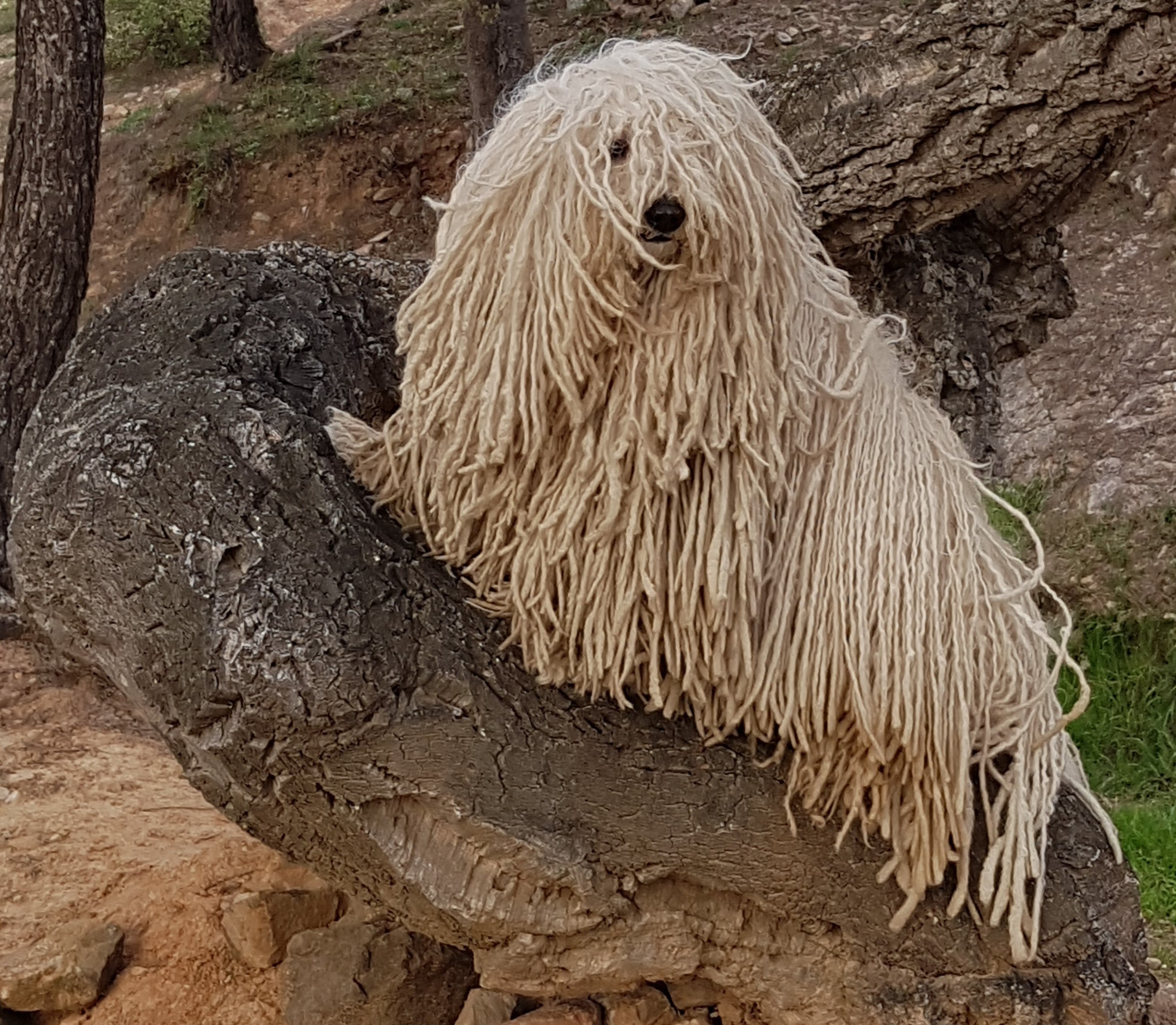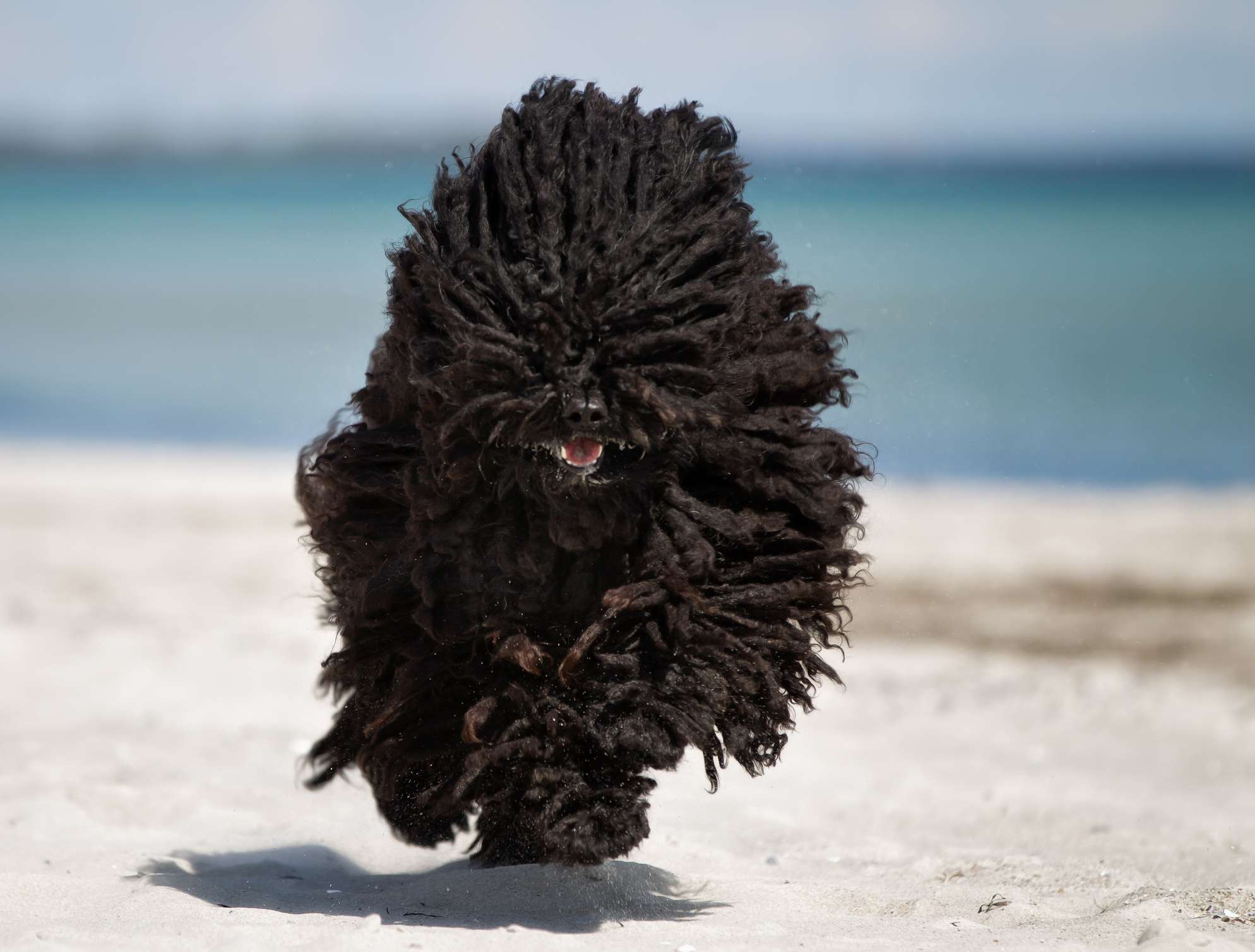
The Puli is a herding breed with ancient roots tracing back over 1,000 years to Hungary, where it was developed by the Magyar tribes. These nomadic people relied on the Puli for managing and guarding livestock. Its lightweight build, agility, and keen intelligence made it an ideal herding companion in the challenging terrain of the Hungarian plains.
The Puli is closely related to the larger Komondor, though the two breeds served slightly different purposes—Pulik (plural of Puli) were used for herding flocks, while Komondorok guarded them. Over time, Pulik became integral to Hungarian agriculture, and even today, they retain their working instincts and energy.
Although not as widely known as some other herding breeds, the Puli has gained global admiration for its unique appearance and lively spirit. The breed was recognized by the American Kennel Club (AKC) in 1936 and is part of the Herding Group.
The Puli is particularly beloved in Hungary, where it is considered a national treasure, and continues to appear in competitive herding, obedience, and agility events worldwide.
The most distinctive feature of the Puli is its dense, corded coat that naturally forms woolly dreadlocks as the dog matures. This coat offers exceptional protection from harsh weather and predators—an evolutionary benefit from its herding origins.
• Height: 16–17 inches (41–43 cm)
• Weight: 25–35 pounds (11–16 kg)
• Build: Compact and muscular with a square, balanced frame
• Coat: Dense, naturally corded or woolly
• Colors: Black (most common), white, gray, silver, or cream
• Eyes: Medium, dark, and bright with an alert expression
• Tail: Curled tightly over the back, blending into the coat
Though the coat appears heavy, Pulik are surprisingly nimble and athletic, moving with a springy, effortless gait.
The Puli is an energetic, intelligent, and independent dog with a strong herding instinct. It is highly loyal and protective of its family and home, making it an excellent watchdog.
• Alert: Always aware of its surroundings; may bark at strangers or unfamiliar activity
• Energetic: Needs plenty of mental and physical stimulation
• Trainable: Quick learner, but can be strong-willed—requires firm but positive training
• Affectionate: Loyal and loving with family, though somewhat aloof with strangers
• Playful: Enjoys interactive play and thrives in active households
Pulik are known for their problem-solving skills and love of movement—they need a purpose to be truly happy.

The Puli is ideal for experienced dog owners who appreciate an intelligent and lively companion with a one-of-a-kind appearance. They excel in dog sports and make devoted pets in homes where their minds and bodies are kept busy.
Best for:
• Active families or individuals
• Experienced dog owners
• Homes with secure outdoor space
• Those interested in competitive dog sports
They may not be well-suited for apartment living unless their exercise needs are rigorously met.
• Exercise: Needs at least one hour of physical activity and mental enrichment daily—herding, agility, or puzzle toys are great options.
• Training: Intelligent but independent—use positive reinforcement and consistency.
• Grooming: Coat requires extensive care if corded—separating cords regularly to prevent matting. Some owners choose to keep the coat trimmed for easier maintenance.
• Living Needs: Best in a home with room to roam; thrives on interaction and activity.
The Puli is generally a healthy breed, but like all dogs, it has a few health conditions to be aware of:
• Hip dysplasia
• Progressive retinal atrophy (PRA)
• Cataracts
• Patellar luxation
• Deafness (rare)
Responsible breeding and regular veterinary checkups will help ensure a healthy life.
Average lifespan: 12–16 years

• Komondor: Similar corded coat, but the Komondor is significantly larger and more protective.
• Bergamasco Sheepdog: Also corded, but with flatter, felt-like mats; less high-energy than the Puli.
• Border Collie: Both are highly intelligent and energetic, but the Puli has a more distinctive coat and can be more independent.
If you’re looking for an energetic, smart, and loyal dog with a truly unique look and plenty of personality, the Puli could be a perfect match. However, they require significant grooming and a stimulating environment to be their best selves.
They are ideal for dedicated owners who enjoy training, outdoor activity, and have time for coat care or the willingness to keep the coat short.
Choose a reputable breeder who screens for genetic health conditions and prioritizes temperament. Pulik can also be found through rescue groups and breed-specific organizations.
United Pet Club can assist with your journey by offering tools like microchip registration, pet passports, grooming product discounts, and personalized care planning for your active companion.